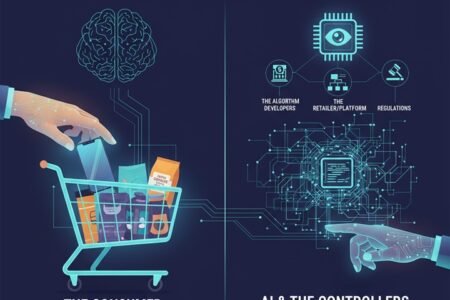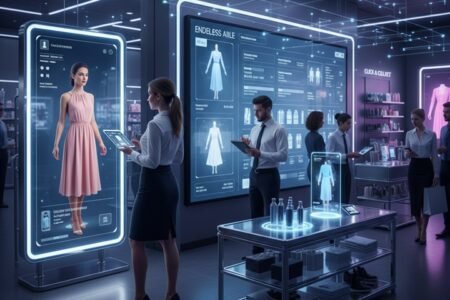
How The Pant Project is Using Hyperlocal Marketing, Data, and AI to Transform the Modern Retail Experience

The Pant Project
VP of Retail
Today when you walk into a modern retail store, you are stepping into a space that has been engineered by data, driven by algorithms, designed to convert curiosity into customer loyalty. But while technology keeps advancing, what truly drives impact is understanding and engaging audiences at a hyperlocal level.
This interview draws on best practices from The Pant Project, while also reflecting on insights and learnings from leading premium brands. It explores how pioneers in the space are using data, customer experience, and retail innovation to enhance the overall consumer journey.
Sharath Raju expertise lies in retail Operations and Customer Experience. He is a seasoned project manager with an inclination towards fashion, health and wellness and it’s application to users. His skills include new product launches and business development of specialty concepts.
Q: You’ve worked across major D2C brands like Lenskart and now The Pant Project. How have you seen the offline retail journey evolve in the last few years?
A: “The biggest shift has been how technology is deeply embedded in the offline experience to drive both customer engagement and decision making. The most noticeable change we have seen is how technology like 3D Try-On, AI-based search integration on apps and social media, footfall analytics, and customer flow management is being used to elevate in store experience. He also said, what sets successful brands apart is their ability to find the ‘hook’. It is the unique combination of great service and smart tech integration that keeps customers coming back.”
Q: What are some key strategies you’ve seen work well to drive footfall from digital platforms to physical stores?
A: “Within The Pant Project, the ad strategy has worked really well. They identify hyperlocal influencers with strong community followings near specific stores or markets. For instance, they collaborated with a Gujarati influencer to create content and build awareness through a campaign on Meta. This significantly multiplied reach. By the time the store opened, customers were already familiar with the brand through the influencer and had a sense of the experience and value they could expect in-store.
Additionally, regional content has performed well for The Pant Project. In Hyderabad, for example, the brand focused on a specific segment through the Icons of Hyderabad campaign. We’ve taken a similar hyperlocal approach in other cities: in Kochi, we partnered with a local community page (Oh Kochi), and in Mumbai, we worked with the Mumbai Foodie Group. Regional, culturally relevant content consistently outperforms generic campaigns.
Our spend is high on Meta, and we’ve seen strong returns. Beyond that, we’ve been leveraging WhatsApp marketing more strategically, segmenting our data and sending personalized messaging. After implementing this, we observed a clear increase in ATV (Average Transaction Value), which validated the approach.”
Q: Why is hyperlocal or location-specific marketing becoming increasingly important in India’s retail landscape?
A: “For a retail brand, digital performance can be quantified based on CAC (Customer Acquisition Cost). However, in offline they focus more on brand building. It is a two way solve, while they aim to drive footfall, they also prioritise building brand stickiness.
First, when there’s a focused need for footfall, going hyperlocal can drive measurable revenue impact. For example, with MyGate, we executed a concerted effort across 300 societies week-on-week for FSB Mall, and saw a consistent spike in visits. Concentrated efforts like these around specific store locations help drive brand discovery especially when activating new channels or markets.
Second, we’ve leveraged cross-brand recall through partnerships with complementary brands. For instance, a collaboration with Truefitt & Hill worked well, as the audience overlap benefited both brands. These partnerships enhance visibility and organically increase footfall.
This kind of strategy is important because it doesn’t just bring people in, it also builds stronger brand recall and deeper engagement over time.
And finally, in crowded spaces like malls, it’s important to stand out. Fun, attention-grabbing experiences, like stilt walkers or participating in local events like the Hughes Road Marathon, have worked really well for us. They create buzz and give the brand a face in the community.”
Q: What’s the biggest shift you’ve personally seen in how data is used to drive business decisions?
A: “Data gives us micro-level understanding of how customers move through the journey, especially toward checkout. On average we sell around 50,000 pants per month. so having access to that scale of data helps us uncover small but meaningful opportunities to improve efficiency.
For example, at our Tango zone, we noticed that 30% of footfall came from women. That insight directly influenced our decision to expand the women’s category, and we now see it as an AOV growth lever.
Another metric we track is ‘Footfall to Trial’ (FF2Trial), which came out as a strong indicator of in-store engagement and conversion potential. Visual merchandising has also evolved.By tracking customer interaction touchpoints, we’ve made visual merchandising more engaging, highlighting key USPs, top categories, and creating better ‘touch-and-feel’ moments that connect customers with the product.
At the POS level, we use dashboards to monitor category performance, manage replenishment, track AOV, and even forecast inventory. This has helped us be more agile and accurate in how we stock and display.
We’re also excited about AI sizing, we’ve started enabling digital measurement cards for customers, which not only improves fit accuracy but also unlocks a more seamless omnichannel shopping experience.”





